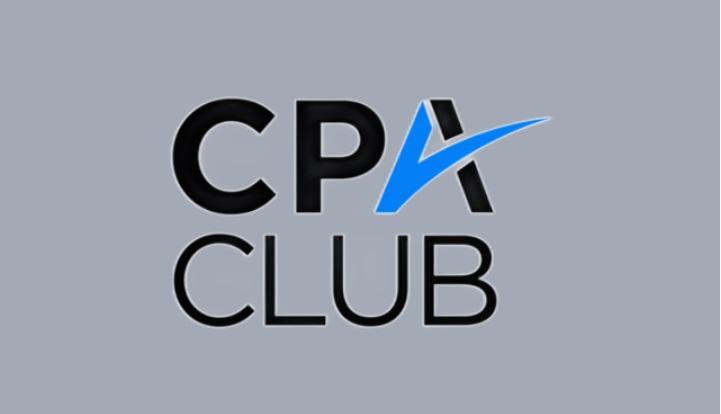From the August 2013 digital issue.
If you Google the phrase “change management” you’ll get 724 million results! And you can find over 80,000 books on the topic. So I guess it’s a popular phrase, but it simply doesn’t work.
Ever since my days as a Macintosh evangelist in the 1980s, I’ve been involved with change management. In those days, I spent all my waking hours trying to convince people that the mouse is a very useful device and that fonts and graphics on the computer screen would be something they would never want to be without. Apple had a laser-sharp vision about the future of the personal computer, and we set our sights on dramatically changing the way people work. But getting people to adopt Apple’s vision was much harder than convincing customers to implement a change management program.
Fast forward to today where it seems everyone is talking about the cloud, and that every business should move all their systems to the cloud. Some firms are implementing change management programs in the old fashioned way in hopes that their managers can somehow force the organization to switch all their processes and systems to the cloud. But I think managers are missing the concept that most people are allergic to “change management.” People don’t like to be managed, but they will always follow good leadership, backed by a solid vision. In fact, most people are desperate to find good leadership.
So the question for you is not about how you manage, but how you lead your firm and your clients to better success. Missing from all the talk about moving to the cloud are two key questions: What is the vision, and what is the roadmap?
To develop your vision, let’s pretend you’re starting a new firm. Would you buy servers, LANs, firewalls, and expensive software that only runs on Windows PCs? Would you buy dozens of file cabinets to store paper-based records? Would you buy high-volume copy machines, and high-speed printers?
What about the phone system? Would you buy long-distance plans, or use hosted VOIP systems with forwarding to cell phones, speech to text messaging, and voicemail forwarding by email?
Would you invest in separate office spaces for your staff and a large client reception area? Will you expect your staff to be in the office every day? Will your clients bring their records in shoeboxes, and pick up their printed financial statements and tax returns?
I’m sure you’ll find many of the answers to the questions above are different today than they were just five years ago. So as you build your vision of your future firm and of your client’s businesses, consider each of today’s entrenched, traditional technologies, and design new-world approaches to replace those systems. Let’s start with the following vision:
- Location
In today’s business world, your selection of a physical location for your offices is not nearly as important as it used to be. Your new firm should focus more on providing a home base where your staff will meet and coordinate activities, but less on the size of individual offices and facilities. Perhaps focus on a large common area or meeting room, as opposed to lots of cubicles or offices. The office will become a gathering place as opposed to living quarters for your staff. Make sure you locate in an area with high-bandwidth Internet access, and close to services you’ll need at the office such as food, supplies, and deliveries.
- Anytime/Anywhere access to all firm and client information
For every piece of technology you select, the goal should be to provide every employee with web access to all data and applications they need to perform their jobs. The vision is to provide a way for every employee or contractor to perform all of their job duties from anywhere. Even if you decide not to allow people to work from home, you want systems in place so people can work from anywhere.
- Paperless Document Management Systems
Embrace paperless document management systems. If your firm relies on paper to operate, you won’t be able to achieve most of the goals contained in the vision of your new firm.
- Fraud Prevention and Security Controls
Invest in systems to implement information security and fraud prevention. The best way to prevent fraud is to remove the opportunity for fraud to occur.
Implement password management systems like Lastpass.com that will lock down all passwords in your firm, allowing management to share (and unshare) access to software and websites. Enforce strong passwords, and educate your employees about best practices for password management.
Select cloud service providers that have strong security compliance certificates (SOC2)
- Automated Workflows
Invest in systems that provide automated workflow.
Think zero-entry at every step, and automation of every business process. Zero-entry technologies allow accountants to be collaborators with small business owners. For the first time ever, we can now help clients manage their accounting data in real-time. This is a key philosophical difference from the old desktop software world because it allows accountants to reclaim “control” of the general ledger, while at the same time providing a much higher level of service to their clients.
- Management Dashboards with Real time, actionable information
Managers should not live in the accounting software. They should have a full management dashboard available via the web that provides access to real-time information about their company’s operations and financial performance. This new firm you’re creating would have a web-based real-time view of the relevant KPIs that management should use to make informed decisions about the business.
- CRM with a 365-degree view of every customer and vendor relationship
CRM should be at the core of your new firm. The CRM should be accessible by all members of the staff, and it should contain all relevant contact information, purchasing history, documents (or links to documents), email conversations, and projects for each customer. You want to be able to look at your CRM and instantly see all relevant activities for any client. You also want to be able to search, sort, and tag records in the CRM so that you can group your customers according to how you plan your marketing efforts.
- Collaboration tools
In your new firm, you want to have a system whereby you can provide workplaces for your team members to participate in projects. Team members may be inside or outside your firm, and you want to be able to control access and workflow between the various stages of each project.
So that’s your vision for your firm, if you were lucky enough to start all over. But the reality for most of us, is that we won’t start from scratch, so we need to build a bridge, or a road map from today’s systems to our new firm that matches the vision.
To build a roadmap, start with the vision and work backwards. Then chunkify and make a schedule. What must happen today vs. tomorrow, next month, next year, and so on. As you make your plan, keep in mind that you cannot stop the world while you re-engineer all your processes and convert your systems. Imagine you’re driving a bus at 60 MPH while simultaneously changing the tires and adding wings. It seems impossible, but the alternative is to continue down a road full of potholes that leads nowhere, and ends in the not-too-distant future.
Ask yourself this question: How can I remain efficient and profitable in serving today’s desktop technology clients, while simultaneously implementing new technologies, processes, and business models to serve tomorrow’s clients who will insist on working with me in the online world?
Here are some steps you can begin taking today to implement the vision. Think about your firm and also about your client’s businesses as you go through this list. You don’t have to do it all at once, but start today, measure your progress, and communicate your vision to your staff. Involve your entire team to build the vision so they have a stake in the success. If you lead, they’ll follow, but they need to understand WHY these changes will benefit the firm:
- If you’re still addicted to using Windows applications, get them hosted by a reputable hosting company. See my article on this topic at: http://www.sleeter.com/blog/2013/02/moving-to-hosted-virtual-servers/. This step will help you achieve many of the benefits of the cloud without having to convert data or retrain your employees. But it’s only the first step in completing your vision.
- Go Paperless Now. Purchase scanners and scan all paper as it comes into the office. You don’t have to scan everything from the file cabinets, but at least you should stop contributing more paper to the file cabinets. See Randy Johnston’s site www.totallypaperless.com for product recommendations and reviews.
- Beef up your Internet access. If you don’t have redundant Internet access, and/or high-bandwidth connections, many of the pieces of your vision cannot succeed. Embark on a project to enhance your office Internet connectivity to the fastest and most reliable provider in your area. You need at least 30 megabits per second (Mbps) download speed and 5 Mbps upload speed for every 10 users in your office. More is always better, especially if you plan to use VOIP phones and video conferencing.
- Consider re-arranging your office space to provide more common-area and meeting areas, as opposed to smaller offices. The goal is to increase collaboration between staff members when they are in the office. Individual work can be done away from the office, while the office environment should foster collaborative activities among the staff.
- Focus on Security and Fraud Prevention. Stop sending QuickBooks data files (not even the Accountant’s Copy) back and forth between client and accountant. Every time we make copies of the QuickBooks file, we’re taking another risk with our client’s data. Stop storing customer credit cards in QuickBooks files and local databases. Remove all paper check writing systems. Implement www.bill.com for managing all cash transactions. This single decision could completely eliminate the huge risk your firm takes by handling paper checks.
- Implement zero-entry systems everywhere possible. If you have a web store, implement systems to connect the web store to the back end accounting system so there is no human data entry needed. Check out www.Itduzzit.com, www.zapier.com, www.onesaas.com. Implement electronic invoicing and urge all vendors to submit bills to you electronically. Implement scan and populate systems for tax. Implement CRM that captures email traffic into each customer record. Implement connections between CRM and web stores as well as back end accounting. www.Zoho.com CRM is an affordable, web-based solution that provides deep functionality for small business.
- Implement project tracking systems. Microsoft OneNote is a great system for keeping track of policies and procedures in a team environment. For more robust project management, consider an online project management system such as Zoho Projects http://projects.Zoho.com.
You can decide how to prioritize the steps above, but they should give you a good list of actions to begin taking today so that you can move closer to your vision, and so you can move closer to providing clients with services they will demand from you in the future.
The one thing I can promise you about the future that you cannot prevent it from happening. Your success will depend how well you “lead” your firm and your clients towards the inevitable changes that are changing virtually everything about how businesses operate.
Thanks for reading CPA Practice Advisor!
Subscribe Already registered? Log In
Need more information? Read the FAQs




